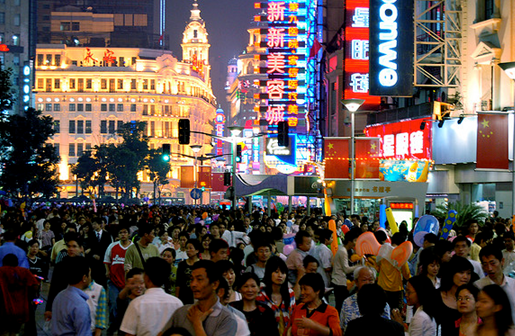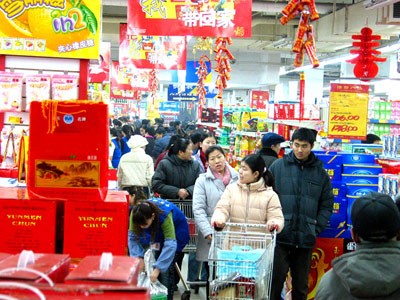China retail
Post on: 19 Октябрь, 2015 No Comment

China’s growth story has been one of the most spectacular economic marvels of the new millennium. Over the last 30 years, China has ushered in an era of economic reform, emerged as an export juggernaut, and has experienced unprecedented urbanization. All these factors, backed up by the state’s unswerving commitment to development, have vaulted the Middle Kingdom to a venerable position globally in terms of Purchasing Power Parity GDP, second only to the United States (U.S.). Over the past two decades China’s Gross National Income (GNI) per capita has expanded 13 times.
And as incomes have grown, so has the capacity to spend. By 2015, per capita consumption in China is set to increase to 17,000 renminbi ($2502) from 13,400 renminbi ($1975) in 2008. Total urban consumption in 2015 is likely to exceed 13.3 trillion renminbi ($1.96 trillion), making the country the third biggest consumer market after the U.S. and Japan according to the 2009 Annual Chinese Consumer Study by McKinsey.
These sweeping changes in China’s socio-economic framework have also led to the emergence of a buoyant retail sector, which thrives on the progressive Chinese consumer. With this, domestic retailers have come to benefit from the mounting retail appetite, and global retail chains have made a beeline to grab a share in the booming Chinese retail market.
As demand in the developed countries reaches maturity, the lure of the flourishing retail market in China has attracted global retailers since the floodgates of the sector were thrown open to foreign players. With consumption demand in most of the developed world still reeling under the aftermath of the global slump, the bustling Chinese retail market provides greener pastures for retailers looking for growth. Moreover, now that the Chinese government is consciously trying to retool its development model more towards domestic consumption rather than export dependence, retailing in the world’s fastest growing economy is poised for exuberant growth.
Urbanization is driving the retail boom
China has experienced unparalleled levels of urbanization since the onset of economic reforms begun in 1978. Compared to 1980, today China’s urban population has increased by over 200%. According to a McKinsey research study, by 2025, two-thirds of the Chinese will be living in urban areas. By 2030, China’s urban centers will be inhabited by 350 million more people, this increase itself beating the entire population of the U.S. today. Also by 2025, 221 Chinese cities will boast of a population of over one million, with 23 cities registering over five million. In comparison, Europe has just 35 cities with a population of over one million currently. The urban economy is expected to generate 90% of China’s GDP by 2025, with its aggregate consumption and disposable incomes twice those of Germany.
While the 1990-2005 period saw the emergence of two mega-cities in China with a population of over ten million, namely Beijing and Shanghai, by 2025 the number of mega-cities is expected to climb to eight, adding Tianjin, Shenzhen, Wuhan, Chongqing, Chengdu and Guangzhou to the group. These mega-cities are fast emerging as urban retail hubs in China.
The power of the aspiring middle-class
World over, the resurgent demand from the growing middle-class has been instrumental in driving global growth. The World Bank estimates that the global middle-class will grow from 430 million in 2000 to over 1.15 billion in 2030 (incomes ranging from $3650-$7300 annually). More importantly, while the developing countries accounted for 56% of the global middle-class in 2000, this figure is expected to zoom to 93% by 2030. China and India together will account for a phenomenal two-thirds of this expansion. In China, the process of economic growth led to fast-paced urbanization and improvements in the standards of living, and with this, more and more urban migrants were propelled to the emerging middle-class.
Source: ‘Understanding China’s Middle-Class’, Kheehong Song & Allison Cui, chinabusinessreview.com, January-February 2009.
The middle-class has become the face of the contemporary and aspiring Chinese consumer, who is now being wooed by domestic and foreign retailers alike. Defining the middle-class as people with incomes ranging from $6000-$25,000 a year, Song and Cui estimate that this virtually non-existent category of consumers in 1995, will boast of over 340 million people by 2016 (Understanding China’s Middle-Class, chinabusinessreview.com, January-February, 2009 ). Constituting about 23% of the Chinese population today, the middle-class is raring to grow to 25% in 2010 and 33% by 2020. The urban middle-class will lead this explosive expansion, with over 60% of urban households estimated to join this group by 2016, compared to 39% in 2006. Needless to say, the power of the rapidly expanding middle-class in China will be a moving force in driving the Chinese retail boom.
China’s wealthy consumers are also making their mark

While the wealthy currently constitute about 1% of China’s urban households, they are experiencing a strong growth of 16% annually according to a McKinsey research report. The number of wealthy households in China is set to rise from 1.6 million recorded in 2008 to about four million in 2015, making the Dragon home to the fourth largest pool of wealthy consumers globally, after the U.S. Japan, and the U.K. The wealthy are concentrated in the East and Central South regions of the country, and over 30% live in the four largest Chinese cities of Shanghai, Beijing, Shenzhen and Guangzhou. A remarkable characteristic of wealthy consumers in China is that on an average they are about 20 years younger than their counterparts in the U.S. and Japan, giving retailers a much wider window of opportunity to capitalize on the purchasing power of this segment. The average Chinese millionaire is only 39. The predominantly young and fast growing affluent Chinese consumers are increasingly making their presence felt in a wide array of industries, such as consumer electronics and consumer luxury goods, as well as the automotive, real estate, banking, and services sectors.
No wonder that sales of luxury goods are expected to outpace the growth of any other product in China. Over the next five years CLSA, a financial services firm, estimates that China’s luxury goods market will grow at the pace of 25% a year, almost twice as fast as the broader retail sector. A large number of upscale luxury brands such as Louis Vuitton already count China as their single largest market. The Asian giant’s share of world luxury market is also expected to triple by 2020. By the end of this decade, China’s share of luxury market is predicted to be around 45%, higher than that of the U.S.
Unleashing the retail dragon through reforms and foreign investment
While by now most prominent global retailers have forged an entry into the thriving retail industry in China, the framework of rules and regulations governing this sector have remained largely ambiguous and fraught with contradictions. Prior to 1992, foreign retailers were prohibited from setting up joint ventures or wholly-owned subsidiaries for wholesale or retail trade in China. Loosening its tight regulations somewhat, in July 1992 the State Council permitted foreign investment in retailing on a trial basis in Beijing, Shanghai, Tianjin, Guangzhou, Dalian, Qingdao, as well as the five Special Economic Zones (Shenzhen, Zhuhai, Shantou, Xiamen, and Hainan). By 1997, about two dozen foreign-invested stores in China had been approved by the central government to conduct business. However, hundreds of foreign-invested retailing as well as wholesaling enterprises had already established themselves in Chinese cities, having sought approval from the provincial or municipal authorities.
In order to curb the mushrooming of foreign-invested retail enterprises, the central government ordered a moratorium on local approvals, revoking many approvals made in 1997 and 1998 as well. The ownership structure of many of these enterprises was also restructured, making them Chinese majority-owned. Despite these interventions, the tussle between the local and the central government persisted, as many foreign-invested retail enterprises continued to be approved by local authorities.
WTO accession powers foreign investment in retail
China’s accession to the World Trade organization (WTO) in 2001 marked a new, liberalized era for foreign investment in retail. Under the WTO’s Accession Protocol. the opening up of the retail sector was phased over a period of five years to December 2006. The framework of rules however, left much to be desired in terms of clarity and transparency. On the issue of equal ownership between the domestic retailer and the foreign investor, the Commercial Sector Measures brought out in April 2004 by the Chinese government were in contradiction with the Accession Protocol as well as the 2007 FDI Guidance Catalogue. While the Commercial Sector Measures restricted foreign investment to 49% equity for foreign-invested retail chains with more than 30 outlets, the Accession Protocol as well as the FDI Guidance Catalogue of 2007 allowed for equal ownership. However, providing some clarity, the Chinese government’s Administrative Measures for Foreign Enterprises or Individuals Establishing Partnership Enterprises. brought out in 2009, now permits foreign investors or individuals to set up retail enterprises in partnership with domestic entities in China.
The Chinese Ministry of Commerce has also been gradually delegating the authority to approve all foreign-invested retail businesses to provincial commerce branches, facilitating the expansion of foreign retail players within the country. However, the authority to approve retail businesses involving items controlled by the state, as well as enterprises using the channels of direct selling, including, mail order, the internet, franchises, commissioned operations or commercial management, remains centralized.














